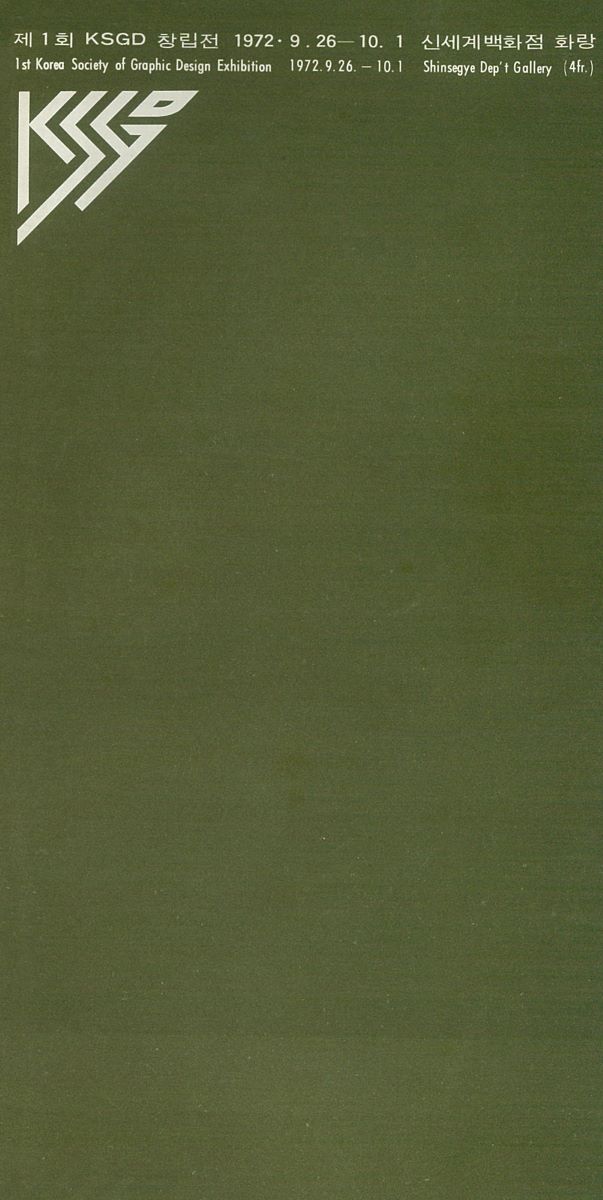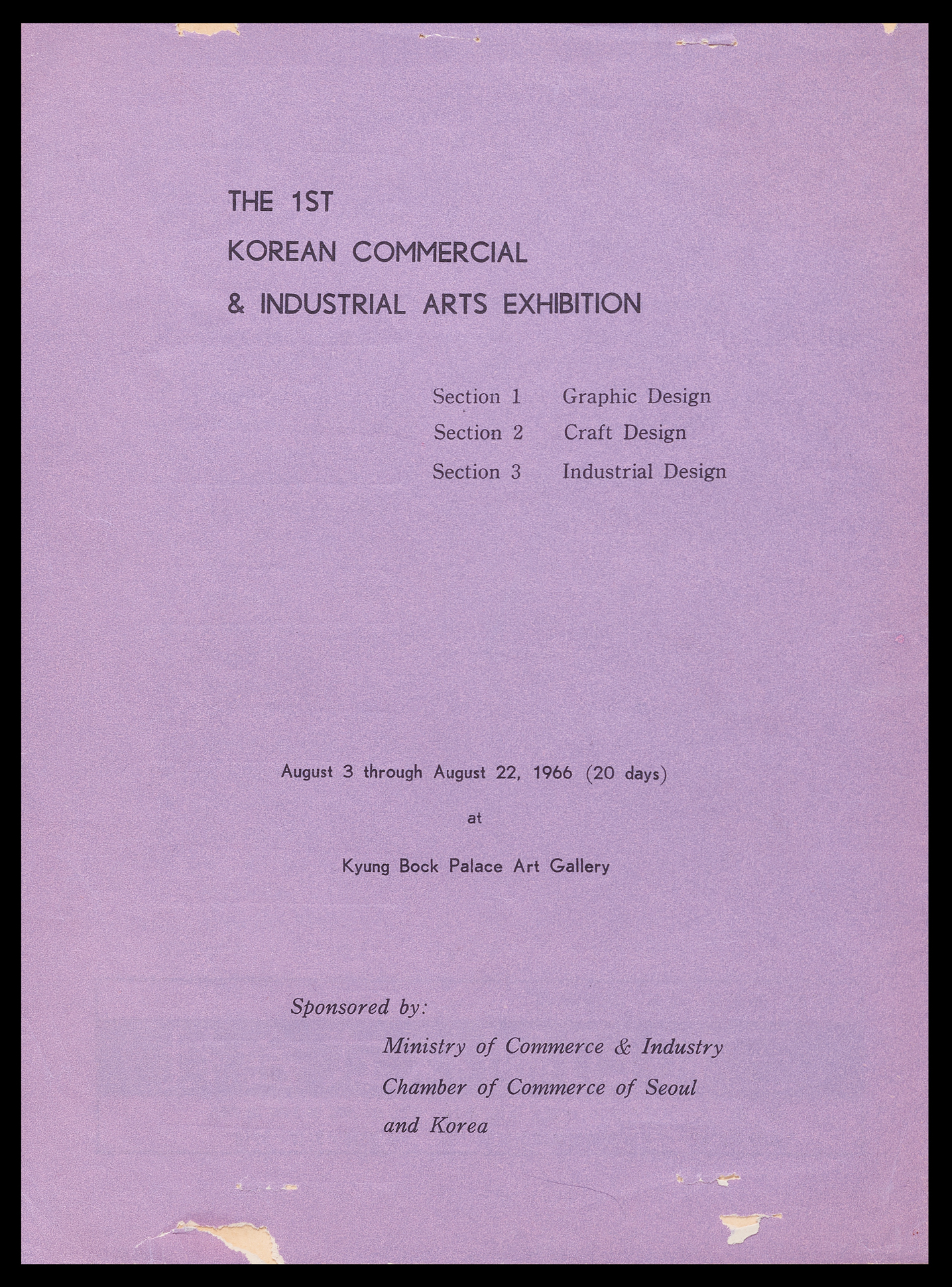Olympic Games Seoul 1988 Official Poster, 1985, Design: Cho Youngjae
Cho Youngjae
* Source: MMCA
Related
-

Visual Information Design Association of Korea
The Visual Information Design Association of Korea [Hanguk sigak jeongbo dijain hyeophoe; VIDAK] is a leading visual design organization founded in 1994 and still active today. It was established by more than 300 visual designers in South Korea who shared the need for an association with an integrated nature. Its principal founding members also belonged to the Korea Society of Visual Design [Hanguk sigak dijain hyeophoe; KSVD], which was formed in 1972 and disbanded in 1993, and the Korea Graphic Designers Association [Hanguk graepik dijaineo hyeophoe; KOGDA], which was founded in 1984 and active at the time. The name of the VIDAK was decided by Cho Youngjae, Baek Myeongjin, and others. On June 18, 1994, a meeting of its promoters was held at the Hilton Hotel in Seoul. On September 7, the association received permission from the Ministry of Trade, Industry, and Energy to incorporate. The KOGDA, which continued to be in operation in 1995, was officially incorporated into VIDAK in December of the same year. Cho Youngjae, a member of the KSVD, assumed the position of the first president of the VIDAK. In the following year, Kwon Myungkwang, who led the founding of the KOGDA, was elected as the second president. The VIDAK published its bulletin fifteen times from 1995 to 2003. Its first yearbook was published in 2004, the second in 2005, and the third in 2017. The VIDAK has regularly held exhibitions for its members as well as international invitational exhibitions. It is engaged in diverse activities, including design research and development, the service business, participation in domestic and overseas design events, and production of journals and publications. It aims to be a central organization for protecting the rights and interests of visual designers, promoting fellowship, and enhancing social values.
-

Korea Society of Visual Design
The Korea Society of Visual Design (Hanguk sigak dijain hyeophoe, KSVD) was a private association in the field of visual design that lasted from 1972 through 1993. The KSVD aimed to improve the quality of designers and contribute to the industrial development of the nation by performing activities for the enhancement of the Korean design industry. In addition, it tried to break away from the existing concepts of “design” and “applied art” and to specialize the visual design field with a modern design concept. Its eleven founding members were Kim Kyoman, Jo Yeongje, Yang Seungchun, Lee Taeyeong, Kim Youngki, Hong Jongil, An Jeongeon, Jeong Sihwa, Kwon Myungkwang, Ryu Jaeu, and Kwon Munung. The organization was founded in September 1972 as the Korea Society of Graphic Design (KSGD) but was renamed the Korea Society of Visual Design in 1977. After Kim Kyoman briefly served as the first president, Jo Yeongje became the second president in December 1972. Jo was followed by Yang Seungchun, Kwon Myeonggwang, Lee Taeyeong, Jeong Sihwa, and others. In 1983, due to conflicts over the management of the society, several members from Hongik University, including Kwon Myeonggwang, withdrew from the society. They formed the Korean Graphic Designers Association (KOGDA) in 1984. The KSVD’s activities centered on member exhibitions, and it held a total of seventeen exhibitions before it was disbanded. Other activities include the publication of collections of works, the holding of seminars and symposiums, and exchanges with overseas designers and design organizations. In February 1993, the general assembly voted to dissolve the KSVD and disbanded it “in order to welcome new generations by meeting domestic social and cultural changes and to positively and actively respond to international changes.”
-

Kim Kyoman
Kim Kyoman (1928-1998) was a graphic designer celebrated for his lyrical illustrations and an educator. After graduating from the Applied Arts Department at the College of Fine Arts of Seoul National University in 1956, he founded KK Design Research Institute along with Kwon Soonhyung at the suggestion of their teacher Chang Louis Pal and operated it until 1958. Later, Kim served as a teacher at Jinmyeong Girls’ High School, Sacred Heart [Seongsim] Girls’ High School, and Seoul Arts High School. He also worked as a designer for advertisements and textile patterns at Eastern Textile Manufacturing from 1960 through 1962. In 1964, he began teaching as a part-time lecturer in the Applied Arts Department at Seoul National University. He became a full-time professor in 1965 and taught students until his retirement in 1994. In September 1972, he founded the Korea Society of Graphic Design (KSGD) together with ten other artists. They are Cho Youngjae, Yang Seungchoon, Lee Taeyeong, Kim Youngki, Hong Jongil, An Jeongeon, Jeong Sihwa, Kwon Myeonggwang, Ryu Jaeu, and Kwon Munung. Kim Kyoman served as the first president of the society. The KSGD was renamed the Korea Society of Visual Design (KSVD) in 1977 and operated until 1993. Among notable works by Kim from the 1970s are the Seoul subway symbol (1974) and total design of Seoul subway lines 3 and 4 (1978). In the early 1980s, he focused on developing identity designs for banks, including Hanil Bank, Housing and Commercial Bank, Industrial Bank of Korea, and Daehan Investment Trust. In 1987, he served as an expert adviser for cultural poster design and environmental decoration for the Seoul Olympic Games. In 1992, he designed the symbol and logotype for the Visit Korea Year in commemoration of the 600th anniversary of Seoul as the capital. His first solo exhibition Kyo Man Kim Visual Communication Design was held in 1976 at the Korean Design Center. Kim held five solo exhibitions until his death, including Rhythm of Korea from 1998, which became his posthumous exhibition, in New York. In 1978, at the age of fifty-one he studied for six months at St. Martin’s School of Art in England. He published two collections of his illustration work: Korean Melody (Dijain yeongusa, 1980) and Graphic 4: Beautiful Korea 86 (Mijinsa, 1986). From 1985 until 1988, he served as president of the Seoul Society of Illustrators (present-day The Korean Society of Illustration Research). In 1993, he was awarded the Dongtap Industrial Medal.







